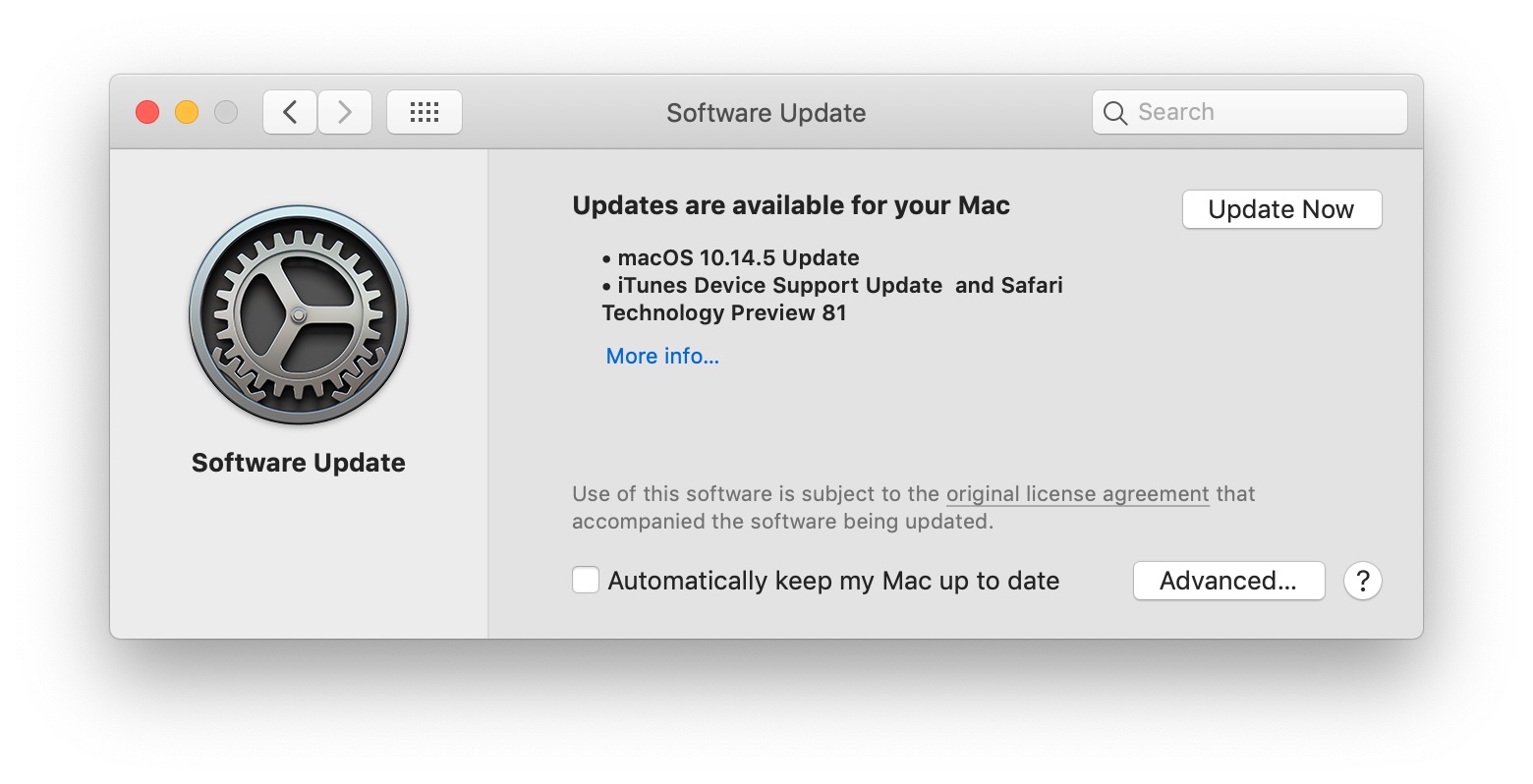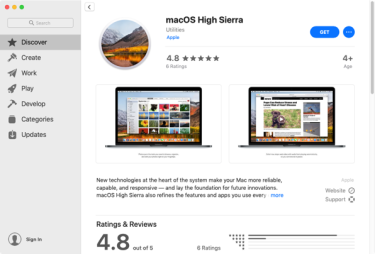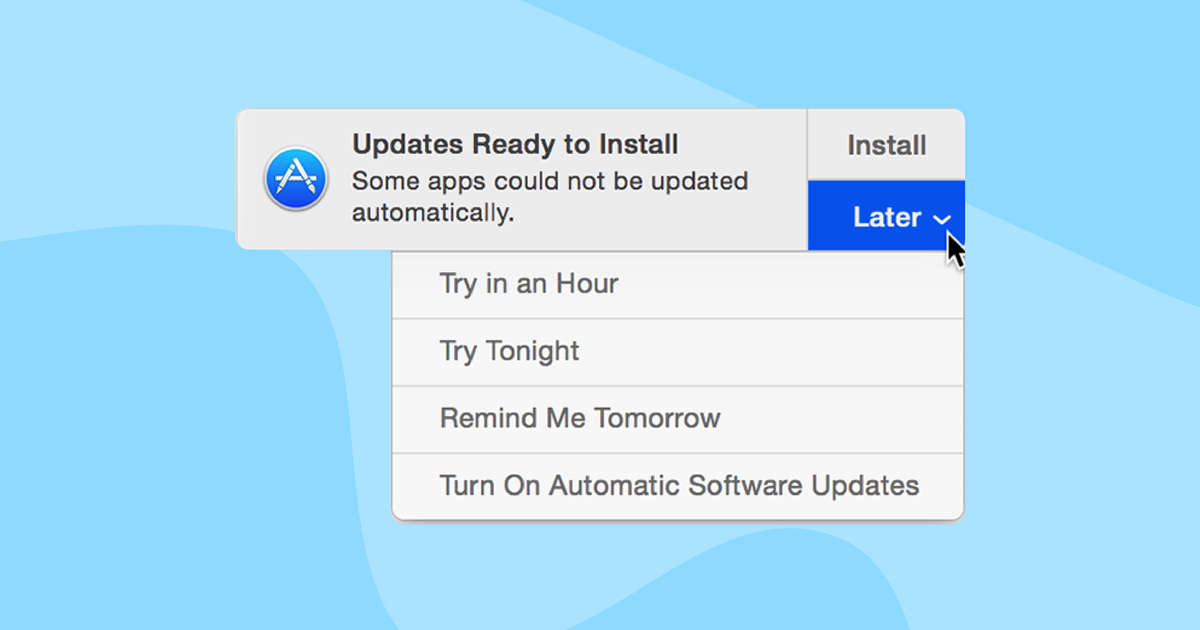macOS Catalina gives you more of everything you love about Mac. Experience music, TV, and podcasts in three all-new Mac apps. Enjoy your favorite iPad apps now on your Mac. Extend your workspace and expand your creativity with iPad and Apple Pencil. And discover smart new features in the apps you use every day. Now you can take everything you do above and beyond.
Check compatibility
If you're using one of these computers with OS X Mavericks or later,* you can install macOS Catalina. Your Mac also needs at least 4GB of memory and 12.5GB of available storage space, or up to 18.5GB of storage space when upgrading from OS X Yosemite or earlier.
MacBook introduced in 2015 or later
MacBook Air introduced in 2012 or later
MacBook Pro introduced in 2012 or later
Mac mini introduced in 2012 or later
iMac introduced in 2012 or later
iMac Pro (all models)
Mac Pro introduced in 2013 or later
* To upgrade from Lion or Mountain Lion, first upgrade to El Capitan, then upgrade to Catalina. To find your macOS version, Mac model, memory, and storage space, choose About This Mac from the Apple menu . If your Mac isn't compatible with macOS Catalina, the installer will let you know. View the complete list of compatible computers.
Download Google Chrome on your Mac to get a multi-functional web browser that’s easy to use and customize, no matter your skill level. Google Chrome is preferred by two-thirds of browser users across platforms, securing that position by serving as a major platform of compatibility for web apps, and should not be confused for Chrome OS which. This download will update your Mac OS X system sofware to include new services as well as fixes and other improvements. It addresses several known issues, including a situation in which an.
Make a backup
Before installing any upgrade, it’s a good idea to back up your Mac. Time Machine makes it simple, and other backup methods are also available. Learn how to back up your Mac.
Get connected
It takes time to download and install macOS, so make sure that you have a reliable Internet connection. If you're using a Mac notebook computer, plug it into AC power.
Download macOS Catalina
If you're using macOS Mojave, get macOS Catalina via Software Update: Choose Apple menu > System Preferences, then click Software Update.
Or use this link to open the macOS Catalina page on the App Store: Get macOS Catalina. Then click the Get button or iCloud download icon.
Begin installation
After downloading, the installer opens automatically.
Click Continue and follow the onscreen instructions. You might find it easiest to begin installation in the evening so that it can complete overnight, if needed.
If the installer asks for permission to install a helper tool, enter the administrator name and password that you use to log in to your Mac, then click Add Helper.
Allow installation to complete
Please allow installation to complete without putting your Mac to sleep or closing its lid. Your Mac might restart, show a progress bar, or show a blank screen several times as it installs both macOS and related updates to your Mac firmware.
Stay up to date
After installing macOS Catalina, you will be notified when updates to macOS Catalina are available. You can also use Software Update to check for updates: Choose Apple menu > System Preferences, then click Software Update.
Or get macOS Catalina automatically
If you're using OS X El Capitan v10.11.5 or later and your App Store preferences or Software Update preferences are set to download new updates when available, macOS Catalina will download conveniently in the background, making it even easier to upgrade. A notification will inform you when macOS Catalina is ready to be installed. Click Install to get started, or dismiss the notification to install later. When you're ready to install, just open the file named Install macOS Catalina from your Applications folder.
Learn more
- If the installer shows a list of apps that are not optimized for your Mac, learn about 32-bit app compatibility, then choose whether to proceed with the installation.
- For the strongest security and latest features, upgrade to macOS Catalina. If you have hardware or software that isn't compatible with Catalina, you might be able to install an earlier macOS, such as Mojave, High Sierra, Sierra, or El Capitan.
- You can also use macOS Recovery to reinstall macOS.
To download the new OS and install it you’ll need to do the next:
- Open App Store.
- Click Updates tab in the top menu.
- You’ll see Software Update — macOS Sierra.
- Click Update.
- Wait for Mac OS download and installation.
- Your Mac will restart when it’s done.
- Now you have Sierra.
How do I update Mojave on Mac?
MacOS Mojave is available as a free update via the Mac App Store. To get it, open the Mac App Store and click the Updates tab. MacOS Mojave should be listed at the top after it’s released. Click the Update button to download the update.
How do I update my Mac operating system from 10.6 8?
Click About This Mac.
- You can Upgrade to OS X Mavericks from the following OS Versions: Snow Leopard (10.6.8) Lion (10.7)
- If you are running Snow Leopard (10.6.x), you will need to upgrade to the latest version before downloading OS X Mavericks. Click the Apple icon at the top left of your screen. Click Software Update.
What is the latest version of Mac OS?
Wondering what the latest version of MacOS is? It is currently macOS 10.14 Mojave, although verison 10.14.1 arrived on 30 October and on 22 January 2019 version 10..14.3 bought some necessary security updates. Prior the launch of Mojave the most recent version of macOS was the macOS High Sierra 10.13.6 update.
Should I update to macOS Mojave?
Many users will want to install the free update today, but some Mac owners are better off waiting a few days before installing the latest macOS Mojave update. macOS Mojave is available on Macs as old as 2012, but it’s not available to all Macs that could run macOS High Sierra.
Will Mojave run on my Mac?

All Mac Pros from late 2013 and later (that’s the trashcan Mac Pro) will run Mojave, but earlier models, from mid 2010 and mid 2012, will also run Mojave if they have a Metal capable graphics card. If you’re not sure of the vintage of your Mac, go to the Apple menu, and choose About This Mac.
How do I upgrade my Mac from 10.6 8 to High Sierra?

If you’re running Snow Leopard (10.6.8) or Lion (10.7) and your Mac supports macOS High Sierra, you will need to upgrade to El Capitan first. You will have to first upgrade to El Capitan, then to High Sierra. You can follow these instructions to get El Capitan.
What do I do if my Mac won’t update?
If you’re positive that the Mac isn’t still working on updating your software then run through the following steps:
- Shut down, wait a few seconds, then restart your Mac.
- Go to the Mac App Store and open Updates.
- Check the Log screen to see if files are being installed.
- Try installing the Combo update.
- Install in Safe Mode.
What version of Mac OS is 10.6 8?
Mac OS X Snow Leopard (version 10.6) is the seventh major release of Mac OS X (now named macOS), Apple’s desktop and server operating system for Macintosh computers. Snow Leopard was publicly unveiled on June 8, 2009 at the Apple Worldwide Developers Conference.
Can I update my Mac OS?
To download macOS software updates, choose Apple menu > System Preferences, then click Software Update. Tip: You can also choose Apple menu > About This Mac, then click Software Update. To update software downloaded from the App Store, choose Apple menu > App Store, then click Updates.
How do I get the latest version of Mac OS?
To download the new OS and install it you’ll need to do the next:
- Open App Store.
- Click Updates tab in the top menu.
- You’ll see Software Update — macOS Sierra.
- Click Update.
- Wait for Mac OS download and installation.
- Your Mac will restart when it’s done.
- Now you have Sierra.
What is the most up to date Mac OS?
The latest version is macOS Mojave, which was publicly released in September 2018. UNIX 03 certification was achieved for the Intel version of Mac OS X 10.5 Leopard and all releases from Mac OS X 10.6 Snow Leopard up to the current version also have UNIX 03 certification.
Should I update my Mac?
The first, and most important thing you should do before upgrading to macOS Mojave (or updating any software, no matter how small), is to back up your Mac. Next, it is not a bad idea to think about partitioning your Mac so you can install macOS Mojave in tandem with your current Mac operating system.
Can you upgrade from Sierra to Mojave?
For the strongest security and latest features, upgrade to macOS Mojave. If you have hardware or software that isn’t compatible with Mojave, you might be able to install an earlier macOS, such as High Sierra, Sierra, or El Capitan. You can use macOS Recovery to reinstall macOS.
Is my Mac too old for Mojave?
That means that if your Mac is older than 2012 it won’t officially be able to run Mojave. macOS High Sierra has a little more scope. Apple said that would run happily on a late 2009 or later MacBook or iMac, or a 2010 or later MacBook Air, MacBook Pro, Mac mini or Mac Pro.
Can my Mac run Sierra?

The first thing to do is check to see if your Mac can run macOS High Sierra. This year’s version of the operating system offers compatibility with all Macs that can run macOS Sierra. Mac mini (Mid 2010 or newer) iMac (Late 2009 or newer)
What is the oldest Mac that can run Mojave?

Here is the full list of Macs that will run macOS 10.14 Mojave:
5 Ways To Check For And Install Updates On A Mac Computer
- MacBook, early 2015 or newer.
- MacBook Air, mid 2012 or newer.
- Mac Mini, late 2012 or newer.
- MacBook Pro, mid 2012 or newer.
- iMac, late 2012 or newer.
- iMac Pro, 2017.
- Mac Pro, late 2013, and mid 2010 an mid 2012 where equipped with Metal-capable GPU.
Can a 2011 Mac Run High Sierra?
The good news is that macOS High Sierra is a widely compatible system software update for Mac. In fact, if a Mac can run MacOS Sierra, then the same Mac can also run MacOS High Sierra. This includes just about any hardware released from 2010 onward, and a few models from the year prior as well.
How do I download an older version of Mac OS?
How to download older Mac OS X versions via the App Store
- Click the App Store icon.
- Click Purchases in the top menu.
- Scroll down to find the preferred OS X version.
- Click Download.
How do I find my version of Mac OS?
First, click on the Apple icon in the top left corner of your screen. From there, you can click ‘About this Mac’. You’ll now see a window in the middle of your screen with information about the Mac you’re using. As you can see, our Mac is running OS X Yosemite, which is version 10.10.3.
What are the Mac operating systems in order?
Complete List Of Mac OS X & MacOS Versions - Macworld UK
macOS and OS X version code-names
- OS X 10 beta: Kodiak.
- OS X 10.0: Cheetah.
- OS X 10.1: Puma.
- OS X 10.2: Jaguar.
- OS X 10.3 Panther (Pinot)
- OS X 10.4 Tiger (Merlot)
- OS X 10.4.4 Tiger (Intel: Chardonay)
- OS X 10.5 Leopard (Chablis)
What versions of Mac OS are still supported?
For example, in May 2018, the latest release of macOS was macOS 10.13 High Sierra. This release is supported with security updates, and the previous releases—macOS 10.12 Sierra and OS X 10.11 El Capitan—were also supported. When Apple releases macOS 10.14, OS X 10.11 El Capitan will very likely no longer be supported.
How do I update my Mac photos?
Update iPhoto or Aperture to the latest version, and then open your library. To check for updates in iPhoto, open the iPhoto menu and choose “Check for Updates”; in Aperture, head to the Aperture menu instead. (The latest version of iPhoto is 9.6.1, and the latest version of Aperture is 3.6.)

What is the latest version of Mac OS High Sierra?
Apple’s macOS High Sierra (aka macOS 10.13) is the newest version of Apple’s Mac and MacBook operating system. It launched on 25 September 2017 bringing new core technologies, including an entirely new file system (APFS), virtual reality related features, and refinements to apps such as Photos and Mail.
Photo in the article by “Flickr” https://www.flickr.com/photos/146625745@N08/31089784845
MacOS - How To Upgrade - Apple
Related posts:
What Is The Latest Version Of MacOS? - How-To Geek
- Quick Answer: How To Update Os X?
- Quick Answer: How To Update Mac Os X 10.7.5?
- Quick Answer: How To Update Operating System On Mac?
- Quick Answer: How To Update Ios On Mac?
- Quick Answer: How To Update Mac Os X 10.5 8?
- Quick Answer: How To Update My Operating System On Mac?
